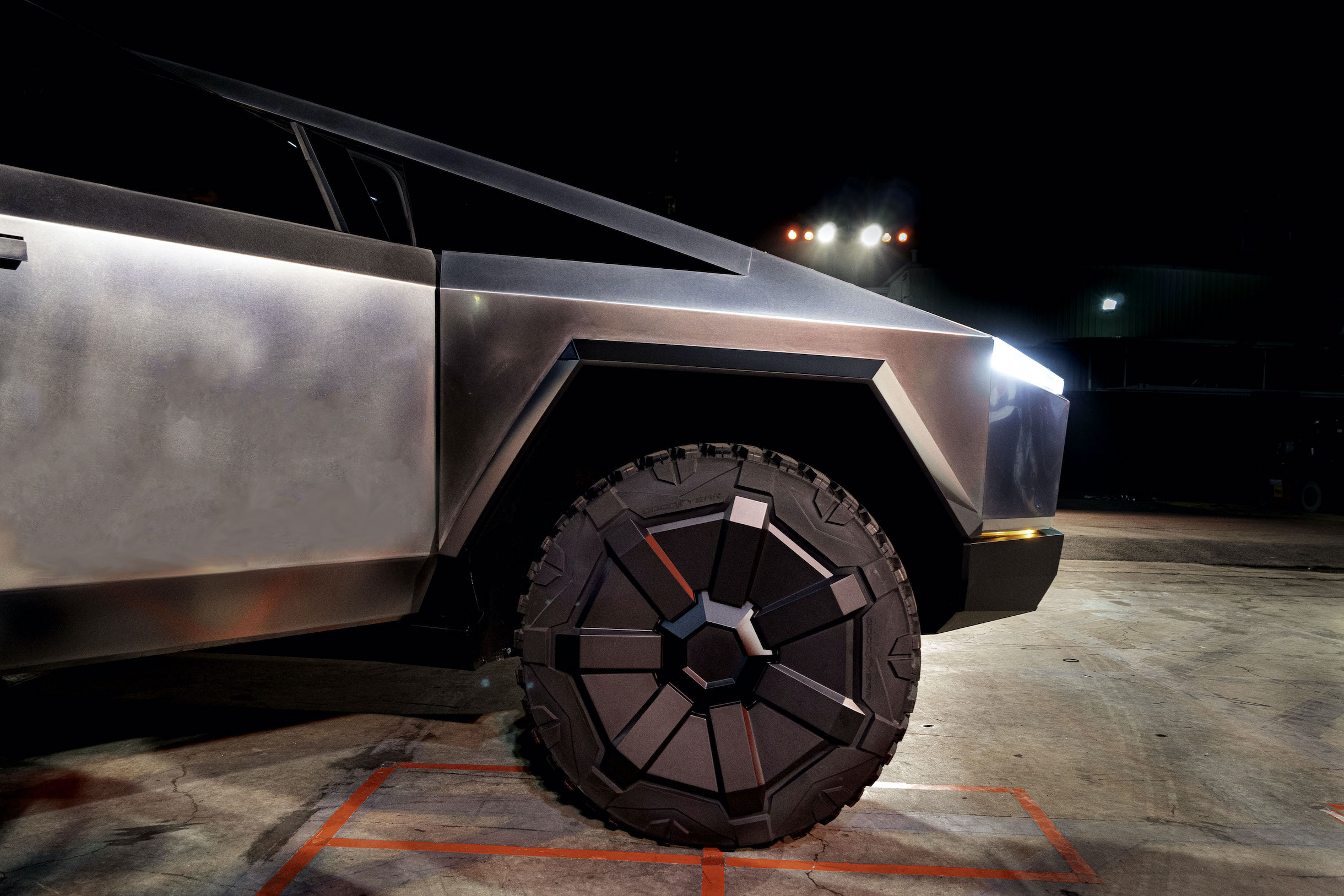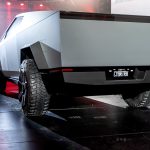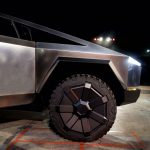

News
Tesla’s Cybertruck will set the trend for future pickup designs, like it or not
Just over 24 hours following Tesla CEO Elon Musk’s grand unveiling of Tesla’s all-electric, rough-and-tough Cybertruck, a shift in perception has begun and automakers in America’s largest market should lookout. What was widely regarded as a “love it or hate it” type of vehicle with a polarizing design that’s characterized by an unpainted steel Exoskeleton is now seeing its narrative shift towards “I must have this thing”, from “oh no, never.”
It is true that the moment the Tesla Cybertruck entered the stage was a big “WTF” moment for practically everyone in attendance at the unveiling and those watching the event online. But this moment may actually end up playing in Tesla’s favor, as the electric car maker has taken a bold step towards a future where pickup trucks are expected to not look like every other truck in the market. This puts pressure on veteran carmakers such as Ford and even upstarts such as Rivian to eventually come up with vehicles that abandon the traditional pickup truck template.
- (Credit: @rrosenbl/Twitter)
- Tesla Cybertruck self-presenting door handles (Photo: Teslarati)
- Tesla Cybertruck on stage at unveiling event in Los Angeles. Nov. 21, 2019 (Photo: Teslarati)
- Tesla Cybertruck futuristic aero wheel makes debut in Los Angeles unveiling event on Nov. 21, 2019 (Photo: Teslarati)
Tesla’s Cybertruck is not for everyone; Musk has made that clear. But considering its aggressive pricing and trademark Tesla performance, the Cybertruck will likely be attractive for enough people that it will end up finding a pretty healthy consumer base, even among those who are traditionally averse to pickup trucks. And this, of course, results in demand for the Cybertruck. After all, it’s pretty silly to assume that a fleet operator or business or police department will shun a tough vehicle that can tow more than the average diesel truck, accelerate like a sports car, and cost very little to “fuel up” just because it looks unconventional.
For these potential customers, the appearance of a vehicle may very well be secondary. What matters is if the truck works, if it will last long, and if its operating costs make business sense. The Cybertruck meets these requirements perfectly, and it does so in a way that is unashamedly electric. As such, detractors of the Cybertruck’s controversial design are best advised to be prepared, since more and more vehicles like it will likely show up on the road in the next few years, or at least within the coming decade.
New designs and concepts, after all, have a tendency to be mocked when they are first introduced. Many may not remember, but the first-generation iPhone was mocked for lacking a physical keyboard. Apple’s Airpods also looked ridiculous when they were first introduced. Even the notches on bezel-less smartphones were criticized mercilessly. Yet today, all these things are the norm. That’s just what happens when something controversial is adopted by enough consumers. Eventually, what was once unsightly or ridiculous becomes accepted.
🖤🖤🖤 Syd Mead 🖤🖤🖤 https://t.co/8nbD5LrAQJ— Elon Musk (@elonmusk) November 23, 2019
Futurists, if any, appear to be embracing the Tesla Cybertuck, at least for its unapologetically sci-fi design. Legendary Blade Runner Art Director Syd Mead, for one, has praised the vehicle, stating that the Cybertruck “has completely changed the vocabulary of the personal truck market design.” The award-winning art director also called the vehicle “stylistically breathtaking,” further stating that it has exceeded his overall expectations. CEO Elon Musk has definitely appreciated these remarks, considering that Tesla did model the Cybertruck after the vehicles in the Blade Runner franchise.
One of Syd Mead’s most famous quotes is that science fiction is “reality ahead of schedule.” With regards to his vehicle design and creations, this definitely appears to be the case, with the Cybertruck becoming a real vehicle that’s available for consumers today. Mead’s comments are, if any, validation that Tesla and Elon Musk are really onto something with the Cybertruck’s design. Half the world may just not be seeing it for now. But if consumers react positively to the vehicle, or if it does get adopted by businesses or police departments or even the army for that matter, then there is little doubt that a few more futuristic pickups would likely be released by other automakers as well — definitely sooner rather than later.
After all, why get a traditional, “boring” pickup truck when you can get a sci-fi monster machine that’s cheaper to run for the same price? That just won’t make much sense now, would it?
News
Tesla begins Robotaxi certification push in Arizona: report
Tesla seems serious about expanding its Robotaxi service to several states in the coming months.

Tesla has initiated discussions with Arizona transportation regulators to certify its driverless Robotaxi service in the state, as per a recent report from Bloomberg News. The move follows Tesla’s launch of its Robotaxi pilot program in Austin, Texas, as well as CEO Elon Musk’s recent comments about the service’s expansion in the Bay Area.
The Arizona Department of Transportation confirmed to Bloomberg that Tesla has reached out to begin the certification process for autonomous ride-sharing operations in the state. While details remain limited, the outreach suggests that Tesla is serious about expanding its driverless Robotaxi service to several territories in the coming months.
The Arizona development comes as Tesla prepares to expand its service area in Austin this weekend, as per CEO Elon Musk in a post on X. Musk also stated that Tesla is targeting the San Francisco Bay Area as its next major market, with a potential launch “in a month or two,” pending regulatory approvals.
Tesla first launched its autonomous ride-hailing program on June 22 in Austin with a small fleet of Model Y vehicles, accompanied by a Tesla employee in the passenger seat to monitor safety. While still classified as a test, Musk has said the program will expand to about 1,000 vehicles in the coming months. Tesla will later upgrade its Robotaxi fleet with the Cyercab, a two-seater that is designed without a steering wheel.
Sightings of Cybercab castings around the Giga Texas complex suggests that Tesla may be ramping the initial trial production of the self-driving two-seater. Tesla, for its part, has noted in the past that volume production of the Cybercab is expected to start sometime next year.
In California, Tesla has already applied for a transportation charter-party carrier permit from the state’s Public Utilities Commission. The company is reportedly taking a phased approach to operating in California, with the Robotaxi service starting with pre-arranged rides for employees in vehicles with safety drivers.
News
Tesla sets November 6 date for 2025 Annual Shareholder Meeting
The automaker announced the date on Thursday in a Form 8-K.

Tesla has scheduled its 2025 annual shareholder meeting for November 6, addressing investor concerns that the company was nearing a legal deadline to hold the event.
The automaker announced the date on Thursday in a Form 8-K submitted to the United States Securities and Exchange Commission (SEC). The company also listed a new proposal submission deadline of July 31 for items to be included in the proxy statement.
Tesla’s announcement followed calls from a group of 27 shareholders, including the leaders of large public pension funds, which urged Tesla’s board to formally set the meeting date, as noted in a report from The Wall Street Journal.
The group noted that under Texas law, where Tesla is now incorporated, companies must hold annual meetings within 13 months of the last one if requested by shareholders. Tesla’s previous annual shareholder meeting was held on June 13, 2024, which placed the July 13 deadline in focus.
Tesla originally stated in its 2024 annual report that it would file its proxy statement by the end of April. However, an amended filing on April 30 indicated that the Board of Directors had not yet finalized a meeting date, at least at the time.
The April filing also confirmed that Tesla’s board had formed a special committee to evaluate certain matters related to CEO Elon Musk’s compensation plan. Musk’s CEO performance award remains at the center of a lengthy legal dispute in Delaware, Tesla’s former state of incorporation.
Due to the aftermath of Musk’s legal dispute about his compensation plan in Delaware, he has not been paid for his work at Tesla for several years. Musk, for his part, has noted that he is more concerned about his voting stake in Tesla than his actual salary.
At last year’s annual meeting, TSLA shareholders voted to reapprove Elon Musk’s compensation plan and ratified Tesla’s decision to relocate its legal domicile from Delaware to Texas.
Elon Musk
Grok coming to Tesla vehicles next week “at the latest:” Elon Musk
Grok’s rollout to Tesla vehicles is expected to begin next week at the latest.

Elon Musk announced on Thursday that Grok, the large language model developed by his startup xAI, will soon be available in Tesla vehicles. Grok’s rollout to Tesla vehicles is expected to begin next week at the latest, further deepening the ties between the two Elon Musk-led companies.
Tesla–xAI synergy
Musk confirmed the news on X shortly after livestreaming the release of Grok 4, xAI’s latest large language model. “Grok is coming to Tesla vehicles very soon. Next week at the latest,” Musk wrote in a post on social media platform X.
During the livestream, Musk and several members of the xAI team highlighted several upgrades to Grok 4’s voice capabilities and performance metrics, positioning the LLM as competitive with top-tier models from OpenAI and Google.
The in-vehicle integration of Grok marks a new chapter in Tesla’s AI development. While Tesla has long relied on in-house systems for autonomous driving and energy optimization, Grok’s integration would introduce conversational AI directly into its vehicles’ user experience. This integration could potentially improve customer interaction inside Tesla vehicles.
xAI and Tesla’s collaborative footprint
Grok’s upcoming rollout to Tesla vehicles adds to a growing business relationship between Tesla and xAI. Earlier this year, Tesla disclosed that it generated $198.3 million in revenue from commercial, consulting, and support agreements with xAI, as noted in a report from Bloomberg News. A large portion of that amount, however, came from the sale of Megapack energy storage systems to the artificial intelligence startup.
In July 2023, Musk polled X users about whether Tesla should invest $5 billion in xAI. While no formal investment has been made so far, 68% of poll participants voted yes, and Musk has since stated that the idea would be discussed with Tesla’s board.
-

 Elon Musk1 week ago
Elon Musk1 week agoTesla investors will be shocked by Jim Cramer’s latest assessment
-

 Elon Musk3 days ago
Elon Musk3 days agoElon Musk confirms Grok 4 launch on July 9 with livestream event
-

 Elon Musk14 hours ago
Elon Musk14 hours agoxAI launches Grok 4 with new $300/month SuperGrok Heavy subscription
-

 News7 days ago
News7 days agoTesla Model 3 ranks as the safest new car in Europe for 2025, per Euro NCAP tests
-

 Elon Musk2 weeks ago
Elon Musk2 weeks agoA Tesla just delivered itself to a customer autonomously, Elon Musk confirms
-

 Elon Musk1 week ago
Elon Musk1 week agoxAI’s Memphis data center receives air permit despite community criticism
-

 Elon Musk2 weeks ago
Elon Musk2 weeks agoTesla’s Omead Afshar, known as Elon Musk’s right-hand man, leaves company: reports
-

 News2 weeks ago
News2 weeks agoXiaomi CEO congratulates Tesla on first FSD delivery: “We have to continue learning!”


















